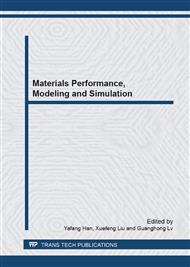p.105
p.112
p.119
p.125
p.133
p.141
p.145
p.151
p.157
Effect of Compound Fluxes on A-TIG Welding Joint Depth of Cu-Cr-Zr Alloy
Abstract:
A-TIG welding for Cu-Cr-Zr copper alloy was carried out on the eleven pure surface activating fluxes including oxides, fluorides and chlorides on the welding formation and the weld D/W ratio by the means of super depth of field and metallurgical microscope. It was found that the oxides and fluorides could improve welding penetration remarkably, especially with CaF2,ZnF2,SiO2 andCr2O3. Four compound fluxes were chosen from the eleven pure surface activating fluxes, which could increase the penetration and modify the welding shape. An optimized formula composed of the four compounds (CaF2,ZnF2,SiO2 and Cr2O3) was developed by using the formula of uniform design method. It showed that the optimized formula could reach a good weld ability and its weld penetration was 2.5 times more than that of TIG.
Info:
Periodical:
Pages:
133-140
Citation:
Online since:
March 2013
Authors:
Keywords:
Price:
Сopyright:
© 2013 Trans Tech Publications Ltd. All Rights Reserved
Share:
Citation:


